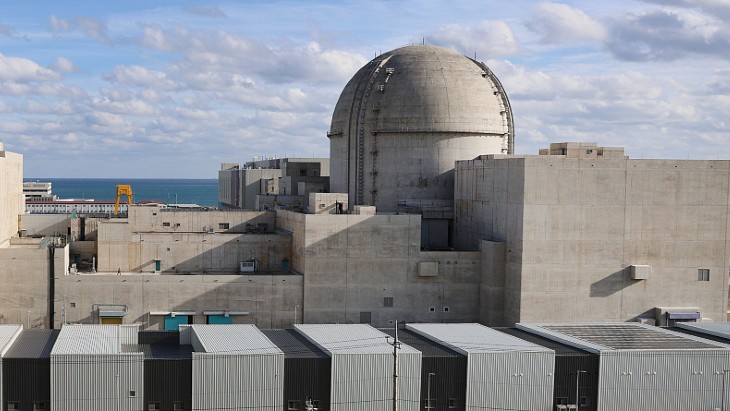NRG, operator of the European Union-owned HFR at Petten, is providing technical services to support Terrestrial Energy for "in-core" materials testing and development of the IMSR power plant. The testing programme at NRG is designed to confirm the predicted performance of selected graphite grades throughout the seven-year cycle of the IMSR. Its scope simulates IMSR core conditions, encompassing the full range of IMSR operating temperatures and of the neutron flux.
The HFR has now reached full power indicating the successful start of the test programme, Terrestrial said. The test programme involved many months of preparation, which included test design, characterisation of the as-manufactured graphites, analysis and development of the loading matrix. This effort utilised the expert services of Terrestrial Energy's engineering consultant, Frazer-Nash Consultancy.
The graphite irradiation programme aims to enable Terrestrial to select the most suitable graphite grade for use in the IMSR reactor, as well as qualifying graphite for IMSR use. Different graphite grades will be subjected to neutron irradiation at elevated temperatures and characterised on a range of material properties. The data set created will cover the lifespan of the graphite components in the IMSR.
The collaboration between Terrestrial Energy and NRG is part of a wider partnership between Terrestrial and the European Union's scientific community, following a March 2018 technical services agreement with the European Commission's Joint Research Centre in Karlsruhe, Germany to perform confirmatory studies of the fuel and primary coolant salt mixture for the IMSR.
"Our work with NRG at its Petten HFR facility is an important element of our overall IMSR test programme, now well underway," said Terrestrial Energy CEO Simon Irish. "The start of in-core irradiation tests speaks to our progress and comes after many months of prior work."
Vinod Ramnandanlal, commercial director of NRG, added, "We recognise the commercial capabilities of molten salt technologies and the growing interest in their development and deployment today. We are delighted to be supporting Terrestrial Energy as it moves forward with in-core irradiation testing, the first developer to commence such testing."
Molten salt reactors use fuel dissolved in a molten fluoride or chloride salt, which functions as both the fuel (producing the heat) and the coolant (transporting the heat away and, ultimately, to the electricity generating equipment). Terrestrial's IMSR builds on 50 years of experience at the USA's Oak Ridge National Laboratory, and integrates the primary reactor components, including the graphite moderator, into a sealed and replaceable reactor core unit. The IMSR uses two molten salt streams - a fuel salt that contains the uranium and another salt to transfer heat from the reactor to the electricity generation system.
Earlier this week, Terrestrial announced the US Department of Energy's Argonne National Laboratory had begun detailed testing of the fuel salt for the IMSR.

.jpg)



_72306.jpg)


_49562.jpg)





